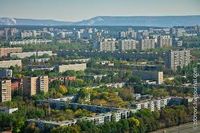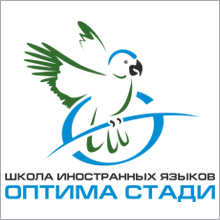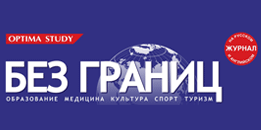Пригласительный билет
Togliatti
Togliatti is a city in Samara Oblast (Region), Russia. Population: 719,632 (2010 Census); 702,879 (2002 Census). It is the largest city in Russia which does not serve as the administrative center of a federal subject.
City divisions.
For the administrative purposes, the city is divided into three districts:
- Avtozavodsky also called Novy Gorod (lit. New City), is the most modern; it was designed to host the workers of the city’s AvtoVAZ factory, home of the Lada car;
- Tsentralny, also called Stary Gorod (lit. Old City), home of the city government and industrial center;
- Komsomolsky, the oldest district, built to house Hydroelectrical Plant builders.
Economy.
The city’s main claim to fame has been automobile manufacturing by AvtoVAZ’s Lada (Zhiguli) car plants, employing some 110,000 people: in cooperation with Italy’s Fiat since 1970 and with General Motors since 2001.
Other industries have moved into Togliatti because it is close to abundant supplies of electricity and water. Petrochemicals are well represented in the city. Among the significant enterprises based there are » TogliattiAzot» (Russia’s biggest ammonia manufacturer headed by Sergei Makhlai) and «KuibyshevAzot» (a nitrogen fertilizer manufacturer and Russia’s biggest caprolactam and polyamideproducer). Other industries include building materials production, ship repair and electrical equipment and electronics.
In 2011 the Togliatti Special Economic Zone was first introduced (SEZ) to further develop the region and diversify the economy of the city. Several auto-component producers (German Mubea and Japanese Sanoh among them) have since been registered, as well as large industrial manufacturers (Praxair and Edscha). By November 2012 the amount of project investment totaled 10 billion Rubles and around 3000 jobs were being created.
By November 2012 the amount of project investment totaled 10 billion Rubles and around 3000 jobs were being created.
Togliatti is ready to offer labor resources requested by the residents SEZ. Moreover, the city is a key sales market forth manufacturers of automotive components and other product categories.
The SEZ is in a close proximity to the city of Tolyatti with:
— 6 own higher educational establishments;
— 14 branches of non-resident higher educational establishments;
— 21 technical colleges.
Transportation.
The transport system is well developed in the city. Public transport includes municipal buses and trolley-buses, and so-called «alternative» (commercial) transport or marshrutkas.
External transport routes are provided by two bus stations, two railway stations and a city harbour. Togliatti has its airport as well, but it is used by personal aircraft only (the nearest international airport, «Kurumoch», is located 40 km away, towards Samara). The city is linked to the federal road network by the M5 «Ural» highway.
As one of Russia’s «motor cities», Togliatti’s car population had been booming and traffic jams are common during morning and evening rush hours — Samara Oblast was one of the first regions to receive an additional licence plate code because its existing code did not have enough numbers for all its residents’ cars.
Culture.
The creation of the Kuybyshev Reservoir in the 1950s destroyed much of the city’s history, so almost all the city’s cultural points of interest—such as the Obelisk of Glory (1958) and Victory Park in Avtozavodsky City District (site of the Victory Monument (1985))—date from the Soviet period, but the city administration has continued to build new monuments and cathedrals. A recent notable event was the 1998 opening of the great Tatishchev Monument near the Volga. The Transfiguration Cathedral was completed in 2002.
Education.
Education is represented by over one hundred public and ten private schools, as well as several higher education institutions. Most notable ones include:
Togliatti State University
Volga Region State University of Service
Tatishchev University of Volga
Togliatti Academy of Management
There are 13 715 new graduates annually, including:
8 348 professionals with higher education;
3 730 professionals with high vocational education;
1 637 professionals with primary vocational education.











